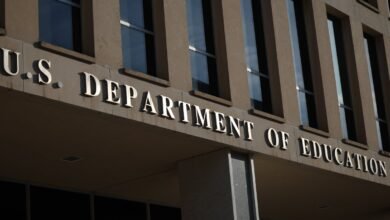
[ad_1]

The shortage of veterinarians in California is still a serious problem, and veterinarians say they are seeing more diseases and deaths in pets simply because they don’t have the capacity to care for them.
Veterinary Emergency Group, or VEG, is one of the only emergency hospitals in Oceanside. This means the heavy load that comes with less doctors and more pets often lands on them.
A UC Davis study found almost two-thirds of animal shelters in California can’t care for basic medical needs because there aren’t enough vets. More than half of vet positions are sitting open.
UC Davis — one of the state’s two veterinary schools — is working to bring more doctors into the industry. It has raised almost $500 million to expand its facilities but will need more to meet staffing demands.
Veterinarian Dr. Leah Sauerwein joined the fold two years ago and has been feeling the pressure ever since. To make matters more tense, spring is when their case load starts picking up.
“For our hospital, we did see about a 17% increase of cases just in the last week,” she said. “We are seeing more rattlesnake envenomations … And we’re definitely seeing an increase in heat stroke as we have more acute smooshy faced friends like French bulldogs and bulldogs who are being more active in the warmer months.”
In January, California enacted a law that allows for telehealth appointments to relieve some pressure. Sauerwein said VEG has been virtually advising patients for free even before the law passed and that it’s made a huge difference.
To get ahead of common pet injuries, Sauerwein said:
- Survey your property often for rattlesnakes if you’ve seen one around before.
- Consider installing a rattlesnake fence.
- Be very careful letting your pet off the leash.
- Always have fresh water for them — heatstroke sneaks up quickly.
[ad_2]
[publish_date








